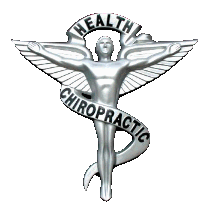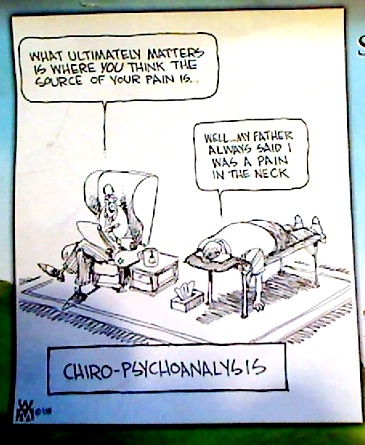 When the Verizon cellphone account headed for expiration, I decided to (a) look for a better deal, and (b) do some serious upgrading. My old folder did its job and did it well, but had gone a wee bit hinky on me over the past few months, randomly shutting down, making phone calls on its own, occasionally beeping uncontrollably, and generally acting like a patron of the Pig & Whistle at last call on a Saturday evening.
Being a fan of Open Systems software, I was naturally drawn to phones running the Android operating system, and the increasingly large ecosystem of apps surrounding it. So I ended up with a Samsung I897 smartphone. And, of course, immediately began looking at the 1.3 gazillion health and fitness apps for it.
When the Verizon cellphone account headed for expiration, I decided to (a) look for a better deal, and (b) do some serious upgrading. My old folder did its job and did it well, but had gone a wee bit hinky on me over the past few months, randomly shutting down, making phone calls on its own, occasionally beeping uncontrollably, and generally acting like a patron of the Pig & Whistle at last call on a Saturday evening.
Being a fan of Open Systems software, I was naturally drawn to phones running the Android operating system, and the increasingly large ecosystem of apps surrounding it. So I ended up with a Samsung I897 smartphone. And, of course, immediately began looking at the 1.3 gazillion health and fitness apps for it.
Most of them, unsurprisingly, are less than impressive, and fall into one of several categories. There are the Body Mass Index calculators, calorie counters, weight loss trackers, and celebrity fitness apps. The first group does nothing more than a pencil and paper, hand calculator or a smart digital scale can do; the second group has utility if all you want to do is reduce input, not recalibrate your diet for a healthy intake; and the only appeal of the final group is to assure you that "YES, YOU CAN LOOK LIKE HER," or alternatively, "YES, YOU CAN GET HER," depending on your gender and orientation.
But after slogging my way through the swampland, I found what I consider to be the three Essential Health Apps. They are available for both Android and iPhone platforms, and all three of these applications have the twin advantages of Doing Something Useful and Doing What They Say They Can Do. Neither of these attributes should be taken for granted in the world of applications software.
Two of these apps are for fitness, and the third is for nutrition. All three are free. And if you are engaged in any level of healthy activities, I encourage you to download them and employ them.
The app we will review today is, to my mind, the best reason for getting a smartphone. Health App #1: Endomondo
Endomondo is an application for cyclists, runners, bladers, skiers and walkers. Like all of the other apps in this category, it uses the phone's built-in gps to track your location, and will report your speed, distance traveled, and average speed as well as other assorted data, both visually and verbally. You can look at a screen that resembles the cyclocomputer on your bicycle, or follow your progress on a map. And at user-set times, Endomondo will verbally give you your performance data. All of these are typical of the breed. However, Endomondo goes a notch higher than the competition in several respects.
First of all, Endomondo's use of the gps is far better than any of the other apps in this category that I tried (I tested the top 6.) I live in an area where gps reception is dicey. I've had $500 gps units sit in front of my house for minutes trying to get a fix on its location, only to report failure and retire from the field.
Endomondo, it seems, can variably adjust its filters on the fly to accept weak-signal situations. As soon as I punch the start button, Endomondo is ready to ride, while others -- notably SportsTracker, SportyPal, and CardioTrainer -- took several minutes to acquire a position fix. And My Tracks, allegedly a premier program, never did get a location fix over the course of a 25 mile ride.
Even with the acceptance of lower-level gps signals, Endomondo's accuracy did not notably suffer. In 25 and 30 mile rides, the app was within .05 miles accurate, as compared to a cyclocomputer which had been previously calibrated against a measured 100-mile distance, and the Endomondo distance measurement fell within the range of error of the calibrated device.
In comparison, CardioTrainer gave me an extra 5 miles over a 25-mile distance, something for which I was grateful but hesitant to accept, even though the CardioTrainer error boosted my average speed to the minor diety level.
SportsTracker can occasionally get a fix, and once fixed, would track with admirable accuracy. But before it would let you take off, you had to add a name and description to your ride. And since my rides are usually unremarkable, this feature made little sense. After all, how many times can you type in "milk run"?
SportyPal's interface was unsuitable for low-signal conditions. Until the gps would initialize, it would seize, leaving me sitting in the driveway waiting for the software to get ready. And that's just not an option in my world.
In comparison, I liked Endomondo's no-muss, no-fuss startup. You just picked your activity (surprisingly enough, the list includes "transport cycling" as an option, which pleased me to no end), pressed the "Start" button, then started. Clean and simple.
Endomondo also has the ability to gather heart rate data from a bluetooth-equipped sensor, which it will incorporate into your ride data.
At the end of your activity, you press "Stop," and all of your data is automatically uploaded to your online Endomondo account.
Online, you can look at your history, your maps, graphs of your ride data in a few different formats; but best of all, you can interact with friends. There are activity challenges constantly going on, and if you set up your phone app to do so, you can allow your friends to track you online in real time. Your friends can help you along by sending freeform text messages via endomondo, which are then read to you by the phone's text-to-speech engine. Imagine how much fun it can be, as you struggle up some desperate incline, to hear your best friend cheering you on with such encouraging phrases as "speed it up, lard butt!" or "enjoying your ice cream stop, pal?"
(Such exhortations can be made somewhat more enjoyable, I found, by equipping your phone's text-to-speech engine with a sexy British accent, making your buddy's ribbing much more pleasant.)
Although some may not like them, the social networking features of Endomondo are definitely a selling point for me. Misery always loves company. So that, plus the easy user interface and the weak-signal GPS performance make this my Number 1 health app.
NEXT UP: We take the Android to the gym and let it show its muscle.
Dr. Avery Jenkins is a chiropractic physician specializing in the treatment of people with chronic disorders. He can be reached at alj@docaltmed.com or by calling 860-567-5727.



 I'm kicking off this year's fall/winter lecture series with what I think may be one of my best -- and most important -- lectures ever. It will be held at 7 p.m. at the Litchfield Community Center, on September 22.
The title of the lecture is What To Do When The Drugs Don't Work, and will discuss the ways that alternative medicine can assist people suffering from chronic illness.
I'm kicking off this year's fall/winter lecture series with what I think may be one of my best -- and most important -- lectures ever. It will be held at 7 p.m. at the Litchfield Community Center, on September 22.
The title of the lecture is What To Do When The Drugs Don't Work, and will discuss the ways that alternative medicine can assist people suffering from chronic illness. For most of the past 100 years, chiropractic physicians and their patients were the only torch-bearers for safe, patient-centered alternative medicine. During the anti-alternative purge of the 20th century, homeopathy was all but wiped out in this country, surviving only on the fringes in Europe for 60 years. Osteopaths, once allied with chiropractors in their unique approach to health, threw in the towel and were co-opted by mainstream medicine; today, the difference between an osteopathic doctor and a medical doctor is indistinguishable except for the initials after the name.
Providers of nutritional and herbal medicine such as the Thompsonians and Eclectics were all but exterminated, and by the 1950s, chiropractic was the only profession left that could provide patients with informed, educated, alternative medicine.
For most of the past 100 years, chiropractic physicians and their patients were the only torch-bearers for safe, patient-centered alternative medicine. During the anti-alternative purge of the 20th century, homeopathy was all but wiped out in this country, surviving only on the fringes in Europe for 60 years. Osteopaths, once allied with chiropractors in their unique approach to health, threw in the towel and were co-opted by mainstream medicine; today, the difference between an osteopathic doctor and a medical doctor is indistinguishable except for the initials after the name.
Providers of nutritional and herbal medicine such as the Thompsonians and Eclectics were all but exterminated, and by the 1950s, chiropractic was the only profession left that could provide patients with informed, educated, alternative medicine. While on vacation last week, I had the opportunity (and the need) to do something I rarely do at home: Get a chiropractic adjustment.
The need was spurred by a headache subsequent to a 100-mile bike ride that saw me traverse Cape Cod from outermost Provincetown to downtown Hyannis, and back again. It was a pleasant trip, though exceedingly hot. And even though I ride a recumbent bicycle, which is far more comfortable for the neck over long distances than a standard upright, the recumbent in the extremely laid-back configuration can produce significant neck strain over time.
While on vacation last week, I had the opportunity (and the need) to do something I rarely do at home: Get a chiropractic adjustment.
The need was spurred by a headache subsequent to a 100-mile bike ride that saw me traverse Cape Cod from outermost Provincetown to downtown Hyannis, and back again. It was a pleasant trip, though exceedingly hot. And even though I ride a recumbent bicycle, which is far more comfortable for the neck over long distances than a standard upright, the recumbent in the extremely laid-back configuration can produce significant neck strain over time.






